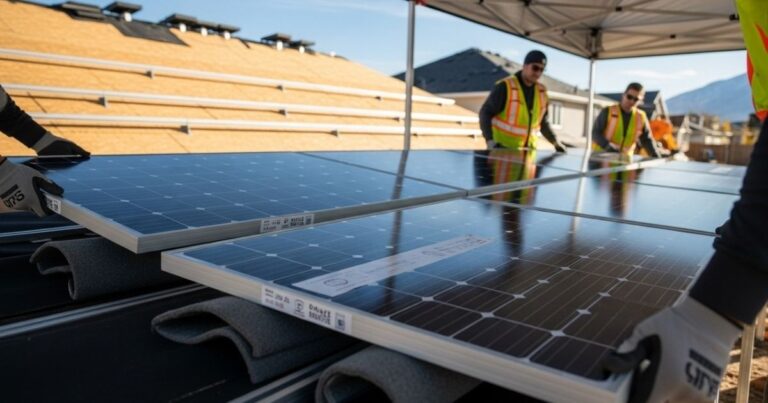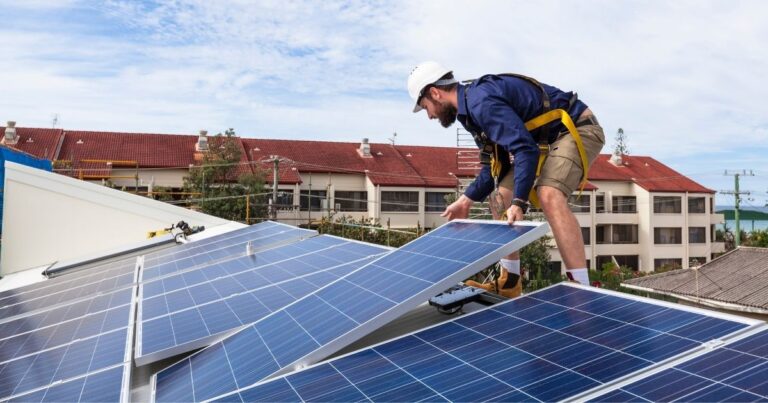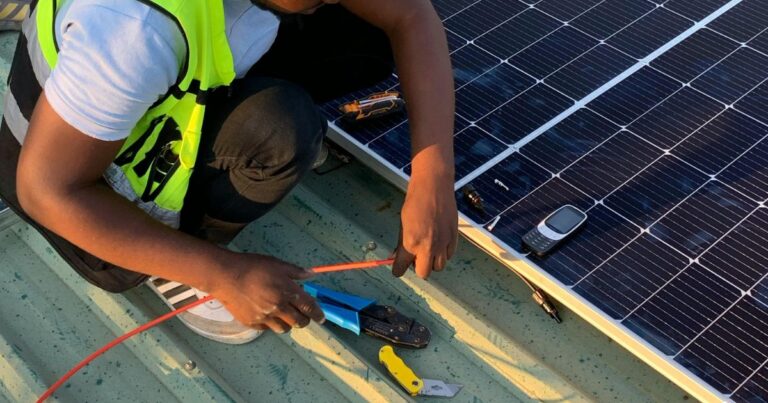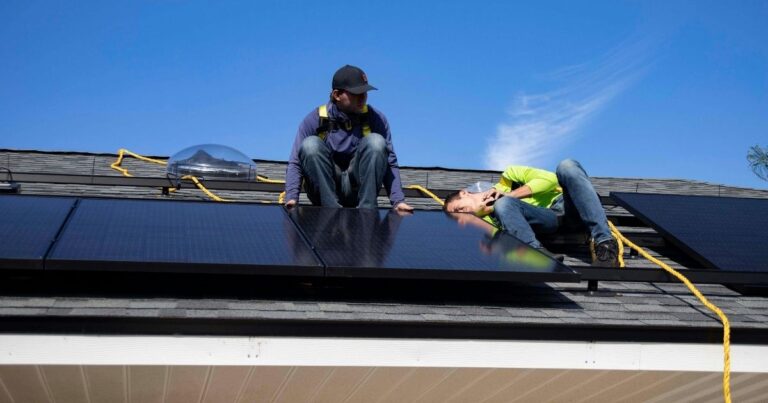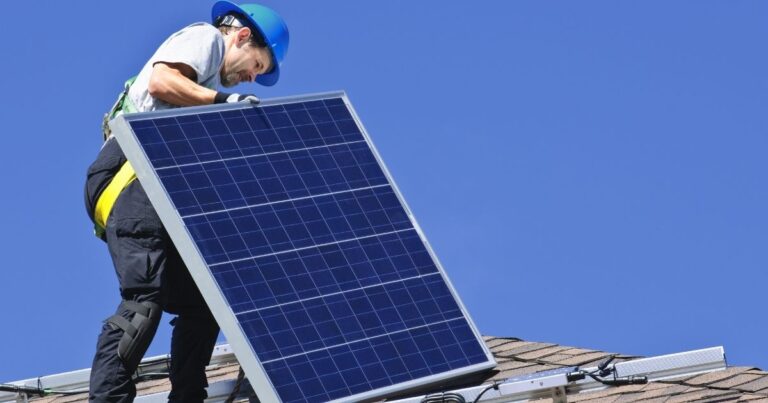Do Solar Panels Need Removal for Roof Replacement?
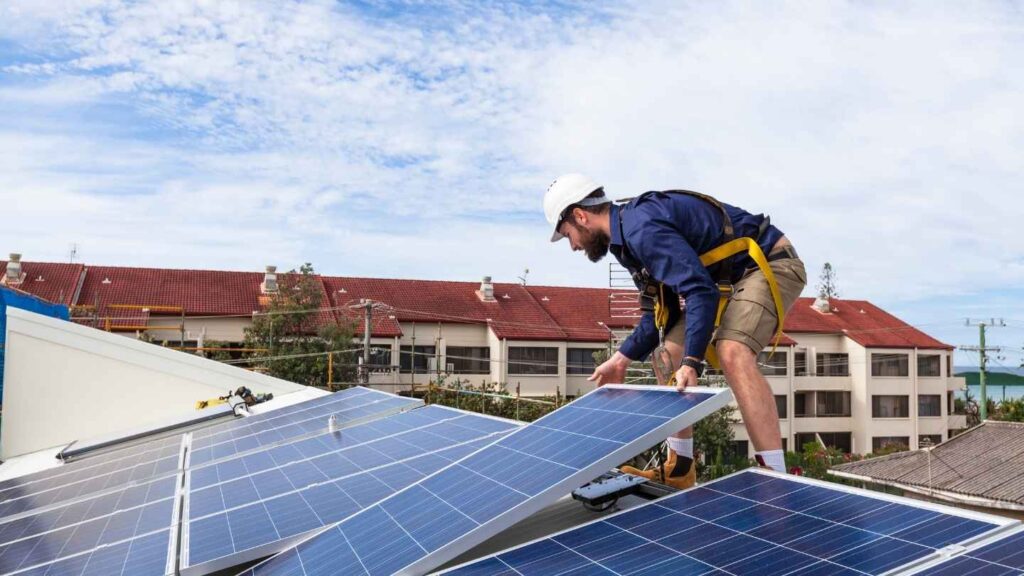
If you’re planning a roof replacement and already have solar panels installed, one of the first questions that comes up is: do solar panels need to be removed for roof replacement? The short answer is yes—and how it’s done can make the difference between a smooth project and costly mistakes.
In this guide, you’ll learn why solar panels must be removed, what happens if it’s not done correctly, how the professional detach and reset process works, and what you can expect in terms of cost, insurance coverage, and downtime. Whether you’re a homeowner, roofer, or insurance adjuster, this article will give you the clarity and confidence you need to protect both your roof and your solar investment.
Here’s what we’ll cover:
- Why Solar Panels Must Be Removed During Roof Replacement
- What Happens if Panels Aren’t Removed Properly
- The Professional Detach & Reset Process
- Cost & Insurance Considerations
- Who Handles Solar Removal—Roofer or Specialist?
- How Long Will Your Solar Be Offline?
- Conclusion – Protecting Your Roof and Solar Investment
First, let’s understand why solar panels must be removed during a roof replacement.
Why Solar Panels Must Be Removed During Roof Replacement
The short answer is yes—solar panels do need to be removed for roof replacement. A roof replacement requires full access to the roof deck, shingles, and underlayment, making professional solar panel removal essential to complete the job correctly. Leaving panels in place would be like trying to replace your carpet without moving the furniture—it might look fine on the surface, but the job underneath won’t be complete or secure.
Beyond access, there are important technical and warranty reasons to remove panels. Roofing materials expand, contract, and need proper sealing during installation. If panels stay attached, installers can’t seal the roof properly around the mounting hardware, which creates a higher risk of leaks or long-term damage. In addition, most manufacturers require that panels and racking systems be handled using manufacturer-approved solar removal methods. Skipping this step can easily void both your solar and roofing warranties, leaving you exposed to costly repairs down the road.
For homeowners, that means your solar investment and your roof are both at risk if panels aren’t removed. For roofers, attempting to work around panels can delay the project and increase liability. That’s why professional detach and reset services are so valuable—they ensure solar warranty protection during roofing while giving roofers the clear, open workspace they need.
Key takeaway: Solar panels must always be removed before roof replacement. Doing so protects your warranties, prevents damage, and sets your project up for long-term success.
What Happens if Panels Aren’t Removed Properly?
Improper solar panel removal during a roof replacement can create more problems than it solves. Without the right expertise, panels can be scratched, wiring can be damaged, and racking systems can be reinstalled incorrectly—raising concerns about roof damage during solar panel removal. These mistakes don’t just affect performance—they often lead to voided warranties, expensive system repairs, and the need for solar panel repair services.
It’s important to note that most roofers won’t (and shouldn’t) attempt solar removal themselves. Roofing contractors are experts in shingles and underlayment, not electrical systems or solar technology. Asking them to handle panels puts both the roof and the solar investment at risk—see the risks outlined in risks of roofers handling solar panels for more insight, which is why professional detach and reset services are critical.
Risks to Homeowners
For homeowners, the stakes are high. If panels aren’t removed and reinstalled correctly, you could face:
- Unexpected costs from broken panels or wiring repairs.
- Extended system downtime, meaning higher utility bills while solar is offline.
- Warranty loss, since manufacturers require panels to be handled according to their approved guidelines.
Risks to Roofing Contractors
Roofing companies also carry significant risk if they attempt panel removal without proper training. These risks include:
- Liability for damaged solar equipment, which can quickly eat into profit margins.
- Project delays, as improperly handled panels often require extra troubleshooting or repair.
- Strained customer relationships, since homeowners may blame roofers for solar complications that fall outside their expertise.
This is why many contractors choose to partner with a solar specialist. Offloading solar work reduces roofing subcontractor liability with solar panels, helps projects stay on schedule, and keeps homeowners confident that their system is in safe hands.
Key takeaway: When panels aren’t removed properly, both homeowners and roofers face unnecessary costs, delays, and risks. Professional handling ensures warranties stay intact and projects move forward smoothly.
The Professional Detach & Reset Process
When it’s time for a roof replacement, understanding solar panel removal explained can help you choose the safest and most reliable way to handle your system.This process is designed to protect your equipment, your roof, and your warranties while ensuring your system works exactly as it did before.
A typical safe solar panel removal during roof replacement follows these steps:
- Documentation – Technicians begin by recording system details, panel layout, and electrical connections. This creates a clear map for reinstallation and is essential for warranty protection.
- Safe Removal – Panels are carefully disconnected and lifted using manufacturer-approved methods, preventing damage to wiring or frames.
- Secure Storage – Panels are placed in a safe on-site location or transported for secure solar panel storage during roof replacement, protecting them from weather or accidental damage.
- Reinstallation – Once the new roof is complete, panels are mounted back in their original configuration through professional solar panel reinstallation.
- System Inspection – A final check ensures the system is producing as expected and all connections meet code.
Documentation & Warranty Protection
Accurate solar reinstallation process and documentation is one of the most important steps. Without it, homeowners may struggle to prove proper handling in the event of a warranty claim. Professional crews follow manufacturer-approved procedures to keep both roofing and solar warranties intact.
Reinstallation & System Checks
After the roof work is complete, panels are reinstalled in the exact configuration they were before. The U.S. Department of Energy recommends professional inspection and maintenance after any solar system reinstall to ensure safe and optimal performance.
Key takeaway: A professional detach and reset isn’t just about removing and replacing panels—it’s about protecting your investment from start to finish. With clear documentation, safe handling, and careful system checks, you can be confident your solar panels will continue performing at their best once your new roof is in place.
Cost & Insurance Considerations
One of the first questions homeowners ask is how much it costs to remove and reinstall solar panels for a roof replacement. While exact pricing depends on system size and roof complexity, most solar panel removal pricing during roof replacement falls within a few thousand dollars. This covers labor, safe handling, storage, and system testing after reinstall.
The good news is that in many cases—especially after storms or hail damage—these costs may be covered by insurance. If your roof replacement is part of a hail damage insurance claim with solar panels, the panel removal and reset is often considered a necessary part of the overall restoration. Working with a company that provides clear documentation helps ensure your claim is processed smoothly.
What Insurance Typically Covers
Insurance generally covers solar panel removal and reinstallation when it’s directly related to roof damage from a covered event, such as hail, wind, or storm damage. In these situations, insurers view the service as part of the roofing restoration process. Professional crews provide detailed records of the work completed, which supports claim accuracy and solar restoration documentation—something adjusters and restoration teams rely on to close claims efficiently.
Out-of-Pocket vs. Covered Costs
If your roof replacement is due to age or wear (rather than storm damage), removal and reset may be an out-of-pocket cost. In these cases, homeowners should budget accordingly and work with a specialist who provides transparent pricing. However, if insurance is involved, it’s important to confirm coverage with your adjuster early in the process to avoid surprises.
Key takeaway: While solar panel removal and reinstallation represents an additional cost, many homeowners find that insurance covers it during storm-related roof repairs. Either way, accurate documentation and professional handling protect your investment and help ensure claims are processed without delays.
Who Handles Solar Removal—Roofer or Specialist?
A common question homeowners ask is whether their roofer can take care of the solar panels during a roof replacement. In most cases, the answer is no. Roofers are experts at shingles, underlayment, and flashing—but they aren’t trained or insured to handle electrical systems like solar panels, which is why it’s important to know who can remove solar panels during roof replacement safely and correctly. Attempting removal themselves could put your system, roof, and warranties at risk.
This is where specialists come in. A professional insured solar removal company has the tools, training, and experience to handle the full detach and reset process safely. They also understand manufacturer requirements, ensuring your warranties remain intact.
Equally important is how these specialists work with others on the job site. Smooth projects depend on collaboration between roofers and solar companies, with clear communication at every step. By coordinating schedules directly with your roofer or insurance adjuster, a specialist ensures seamless scheduling for roofing and solar, so homeowners and contractors don’t have to juggle multiple contractors or worry about delays.
For homeowners in Northern Utah, SwiftSolar D&R fills this exact role. We don’t install or sell solar systems—we focus solely on safe, fast detach and reset services. That means roofers can stay focused on roofing, adjusters can keep claims moving, and homeowners can feel confident their investment is protected.
Key takeaway: Roofers replace roofs, solar specialists handle panels. Working with a dedicated detach and reset partner keeps your project on track, protects warranties, and eliminates unnecessary stress.
How Long Will Your Solar Be Offline?
Another common concern for homeowners is how long their solar system will be down during a roof replacement. The timeline depends on the scope of the roofing project, but in most cases, panels are removed just before roof work begins and reinstalled once the new roof is complete. For a typical home, this means solar may be offline for several days to a couple of weeks, depending on weather, roof size, and project complexity.
The good news is that with a specialist handling the work, downtime is kept to a minimum. Because detach and reset teams coordinate directly with your roofer, they can schedule removal and reinstallation in sync with the roofing timeline. This approach avoids unnecessary gaps where your system would sit offline longer than needed.
If you’re planning ahead, it’s helpful to understand how long a solar panel detach and reset takes—here’s what the average timeline looks like:
- Day 1: Solar panels safely removed and stored.
- Days 2–7: Roof replacement takes place (length depends on roof size and weather).
- Final Day: Panels are reinstalled, tested, and your system is switched back on.
While every project is unique, a coordinated process means you’ll know exactly when your panels will come down and when they’ll go back up.
Key takeaway: Expect some temporary downtime, but with a professional team, your solar will be offline only as long as your roof work requires—no extra delays, no surprises.
Conclusion – Protecting Your Roof and Solar Investment
When it comes to roof replacement, one thing is clear: solar panels must be removed before the work begins. Skipping this step or relying on unqualified removal can lead to costly damage, warranty voids, and frustrating project delays. The safest approach is to work with a professional detach and reset team that knows how to handle solar systems the right way.
For homeowners, this means peace of mind knowing your investment is protected. For roofers, it eliminates liability and keeps projects on schedule. For insurance adjusters, it ensures accurate documentation and smooth claim processing. Everyone benefits when specialists are involved.
At SwiftSolar D&R, we focus solely on solar detach and reset services in Northern Utah. We coordinate directly with your roofer or adjuster, follow manufacturer-approved methods, and ensure your system is restored to full performance once the roof is complete.
Ready to plan your project? Request a free quote today—we’ll coordinate directly with your roofer so you don’t have to worry about a thing.
Frequently Asked Questions
In most cases, roofers will not remove solar panels. Roofing crews focus on shingles, flashing, and underlayment—not electrical systems. Attempting to handle panels themselves could create liability or warranty issues. A specialist is needed to safely detach and reset your solar system.
The cost depends on the size of your system and the complexity of your roof. On average, professional removal and reinstallation ranges from a few thousand dollars. This includes safe handling, storage, and system checks after reinstallation. In some cases, insurance may cover these costs, and homeowners may also qualify for credits under the IRS Residential Clean Energy Credit program if new solar equipment is involved.
For most homes, panels are offline for the duration of the roofing project—typically a few days to a couple of weeks. Specialists coordinate directly with roofers to minimize downtime and ensure your system is reinstalled as soon as the roof is finished.
Yes, if your roof is being replaced due to a covered event such as hail or storm damage, insurance usually covers solar panel removal and reinstallation. Professional documentation is important for smooth claim approval, so always work with a qualified detach and reset company.
Improper handling can void your solar panel and roof warranties. Manufacturers require panels to be removed and reinstalled using approved methods. Hiring a trained specialist protects both your warranties and your long-term investment.

